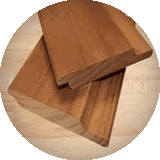Preservation, protection and modification of wood composites
Treatment for wood plastic composites
Early wood plastic composite products were thought to be a decay-free product, with low or no maintenance requirement due to the encapsulation of the wood flour or fibre in the polymer matrix.
In 1998, the revelation that brown rot and white rot fungi had colonised WPC benches in a national park in Florida (Morris and Cooper, 1998) surprised many.
and a new interest in decay resistance of this product was sparked.
The total moisture content of WPC components on soaking was thought to be approximately 10% – which is well below the threshold for decay.
However, studies of the distribution of moisture within the section showed that surface regions may have moisture contents which are well above 25% (Manning et al., 2006).
Development of a laboratory method for this material required some adaptation of the existing fungal decay tests.
in order to obtain quantifiable results within a reasonable timescale.
Pre-test exposure to heat or moisture can be used to increase the moisture content within the WPC material to a level which will enable decay to progress.
Mankowski and Morrell (2000) published early results of decay testing showing an apparent difference in decay between WPCs of different wood fibre content.
while Lomelí-Ramírez et al. (2009) showed that soil tests gave greater weight loss than agar-based tests such as BS EN 350-1 (1994).

Ibach et al. (2013) developed an accelerated pre-conditioning method, and established a paired trial between field and laboratory studies on matched samples.
When a 5-day high-temperature conditioning step was used, a mass loss of 24.9% was reported for Gloeophyllum trabeum in WPC made with 50% wood flour (mixed pine) in an HDPE matrix (Ibach et al., 2014).
Under these conditions the moisture content of the sample during decay was 28.8%.
which is considerably lower than for normal wood testing. but equates to a similar wood component moisture content within the assumed inert polyethylene matrix.
protection and modification of wood composites
Telegram: @woodplast
Instagram: Wpc_ir








